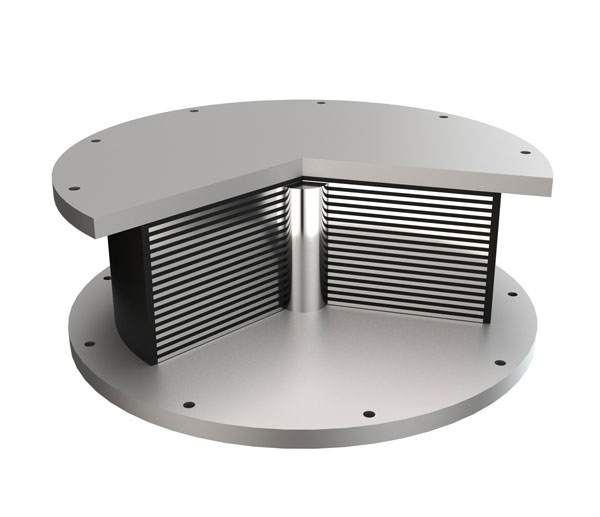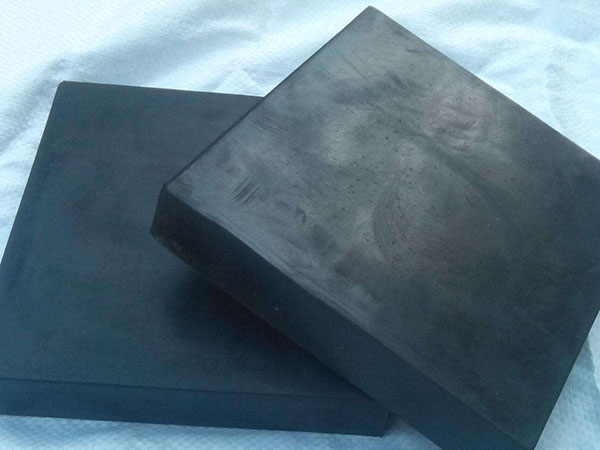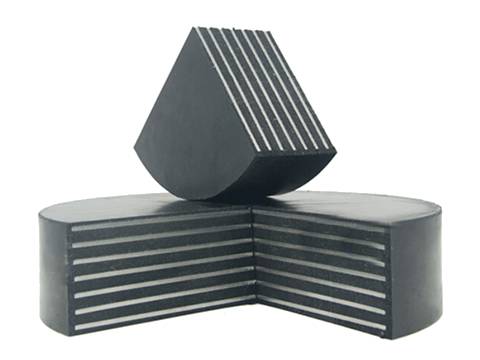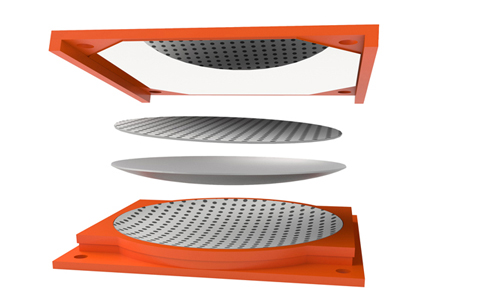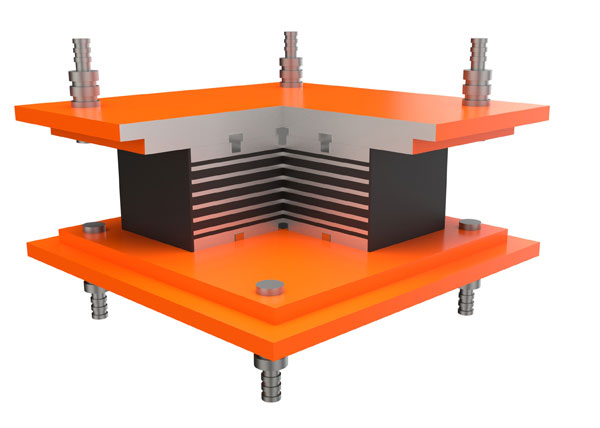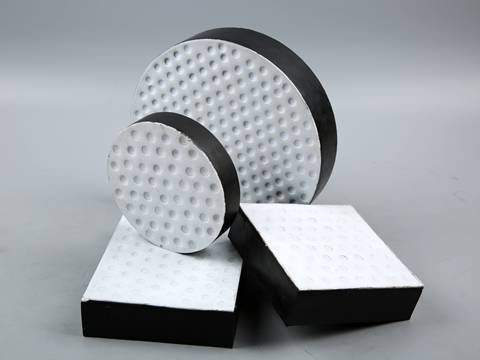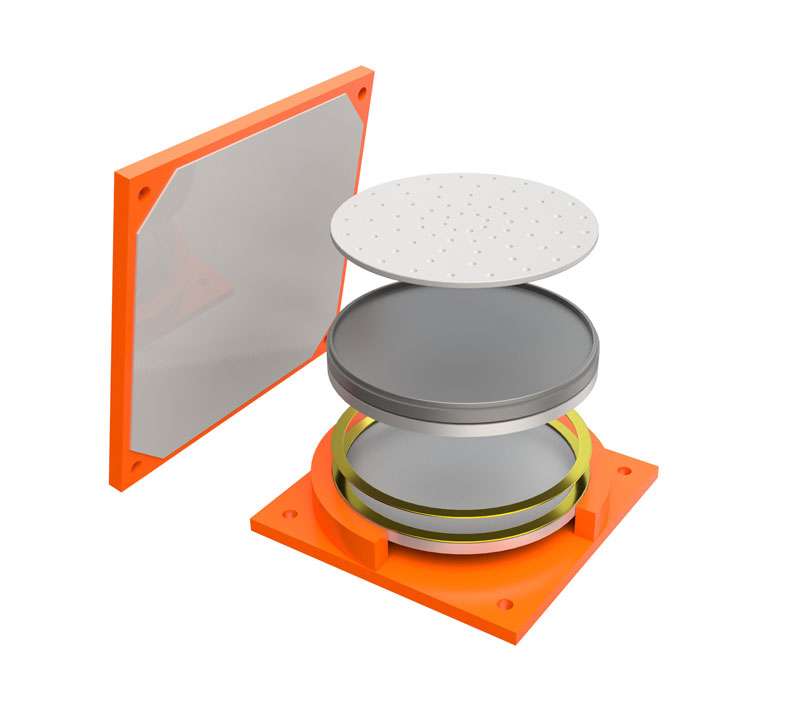Lead Rubber Bearing (LRB), also known as lead-core rubber bearing, is similar to high damping rubber bearing, which is an important part of vibration isolation bearing. It consists of multi-layer elastic material and vulcanized reinforced steel plate with central lead core. Generally, the rubber of the lead rubber bearing is natural rubber, which is more flexible than the elastic bearing. The lead used to make the lead rubber bearing is a malleable metal material. The lead core can not only withstand heavy loads and horizontal forces, but also absorb energy through the plastic deformation of hysteresis damping.
The lead core rubber bearing is formed by pressing the lead core with a purity of 99.9% vertically into the center or around the plate rubber bearing. Because the damping can be chosen by adjusting the diameter or section of the lead core, the design of the support has great flexibility. Under the repeated action of load, the lead rubber bearing can maintain good fatigue resistance and durability. At the same time, the existence of a lead core increases the early stiffness of the bearing, which is beneficial to controlling the wind response and resisting the micro-vibration of the foundation.
The energy absorption effect of lead rubber bearing is mainly achieved by the elastic-plastic deformation of lead. The lead bar is considered an ideal damper because of its low yield strength and good fatigue property under elastic-plastic deformation. As a professional supplier of bridge bearings, Boomarine provides high-quality lead rubber bearings and has passed various professional certifications. We can also customize according to customer needs. If you have any needs, please feel free to contact us.
Features of Lead Rubber Bearing:
- Sufficient durability, larger than the design life of general building structures.
- High level of damping of up to 30%.
- Resistant to aging. Bearing surfaces are coated with a rubber layer to protect the inner rubber.
- High purity lead. We use a high purity lead core in our lead rubber bearings, which is free of any impurities.
- Excellent cycle fatigue resistance, acid and alkali resistance.
- Large enough horizontal deformation capacity to ensure that there will be no instability under strong earthquakes.
- Horizontal stiffness is less affected by vertical compression load.
- Convenient design and construction.
- It has enough vertical and horizontal stiffness to stably support the superstructure and ensure that the basic period of the superstructure is extended to 1.5-3.0 seconds.
Applications of Lead Rubber Bearing:
Lead rubber bearing is the main branch of the seismic isolation system, which is widely used in large structures such as highway bridges, railroad bridges and nuclear power plants to minimize the damage of dynamic loads such as earthquakes.
Specifications of Lead Rubber Bearing:
- Shear modulus: 0.8 MPa, 1.0 MPa, 1.2 MPa.
- Working temperature range: -25 °C to +60 °C.
- Lead core quantity: single or multiple.
- Shape: rectangular and round.
Structures of Lead Rubber Bearing:
The lead rubber bearing consists of a laminated elastic bearing pad, upper and lower sealing connection plate, and a lead plug inserted into the middle of the bearing, as shown in the figure below:
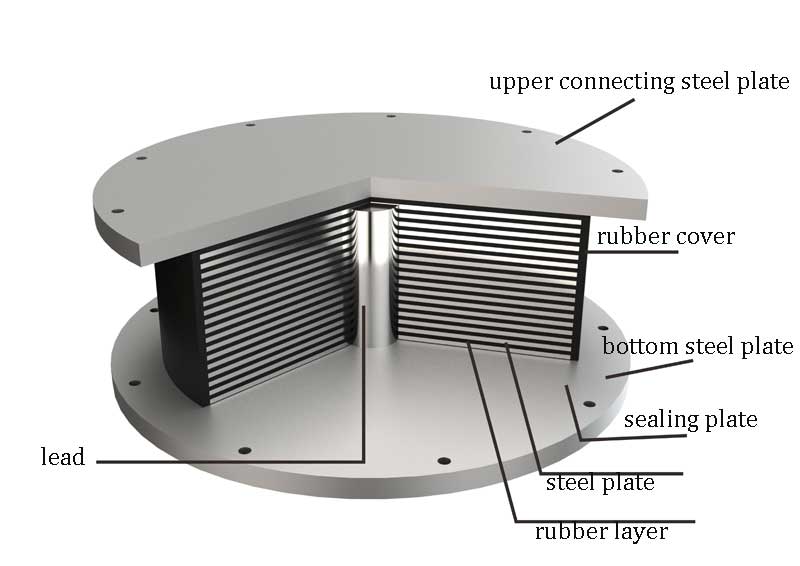
- Vertical load transfer process: crossbeam → top pre-buried steel plate → top connecting steel plate → top sealing steel plate → lead core structure laminated rubber bearing → bottom sealing steel plate → bottom connecting steel plate → bridge pier.
- Horizontal load transfer process: pier → bottom footing bolt → bottom connecting steel plate → top sealing steel plate and shear tenon → top connecting steel plate → top pre-buried steel plate → anchorage member.
Working Principle of Lead Rubber Bearing
In an earthquake, unisolated buildings will vibrate back and forth in different directions due to inertial forces, resulting in building deformation and damage. The lead rubber bearing can separate the vibration of the top and bottom structure, expand the natural vibration period, and reduce the seismic force. The lead plug will slide together with the laminated rubber during an earthquake, but convert this movement energy into heat, thereby effectively reducing the inertial force of the building, thereby slowing down the vibration of the building. At the same time, the rubber part will maintain its original shape due to high elasticity.
After the earthquake, the lead rubber bearing helps the building return to its normal position through the dynamic recovery and recrystallization of the lead-core and the shear strain of the laminated rubber bearing.

